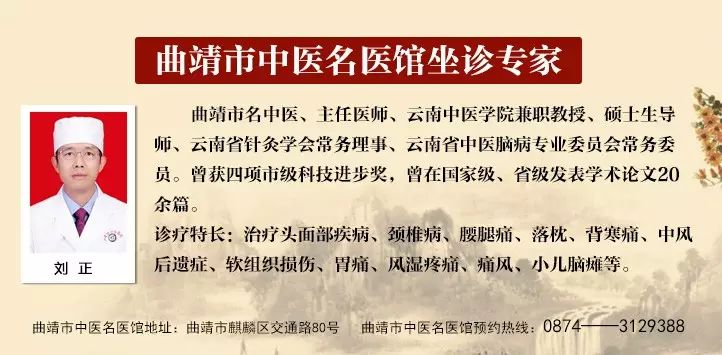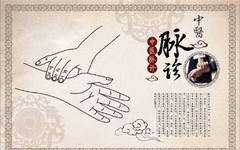This official WeChat account is managed by the Yunnan Provincial Administration of Traditional Chinese Medicine. If you have not followed us yet, please click the blue “Yunnan TCM” above to follow.

▶This article is the content of the 236th issue of the “Learn TCM with Me” column. Thank you for your support and sharing! Learn a little every day, and a healthy life will always accompany you!
The pulse pattern is observed through four aspects: position, rate, shape, and force. The position refers to the depth of the pulse beneath the skin. The pulse position can be classified as floating or sinking; floating pulses are superficial, while sinking pulses are deep within the muscles and bones. The rate refers to the speed of the pulse, which can be slow or rapid. A pulse with fewer than four beats per breath is considered slow, while five or six beats per breath is considered normal. The shape includes the thickness of the pulse and its specific characteristics, such as a hollow pulse resembling a scallion tube or a pulse resembling a bean. The force refers to the strength or vigor of the pulse, which helps to distinguish between deficiency and excess. A strong pulse indicates excess, while a weak pulse indicates deficiency. There are approximately 28 types of pulse patterns, each with unique characteristics. The key to differentiating pulse patterns is to carefully discern the changes in position, rate, shape, and force, responding to change with constancy. Based on this foundation, the methods of analogy and contrast can be used to more accurately differentiate pulse patterns.
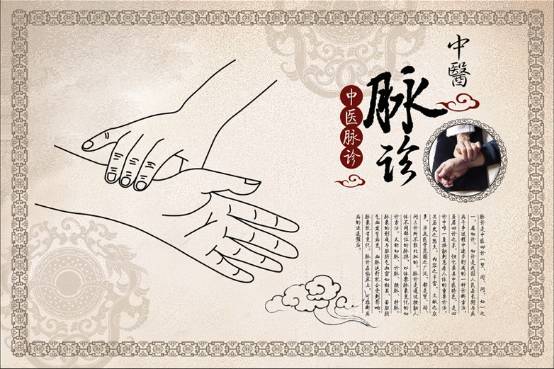
1. Analogy Method
Throughout history, physicians have accumulated rich experience in differentiating pulse patterns. For example, Wang Shuhe pointed out some similar pulse patterns, while Li Shizhen compiled a detailed pulse song. Xu Lingtai further elaborated on the methods for differentiating pulse patterns, specifically using the analogy method to compare similar pulse patterns and the contrast method to compare opposing pulse patterns. Here are some examples of similar pulse differentiation:
Floating pulse and deficiency, hollow, and scattered pulses: All four are similar in that their pulse positions are superficial. However, the floating pulse is characterized by a broad and abundant feel, slightly diminishing under heavy pressure but not empty; the deficiency pulse is large and weak, feeling empty under heavy pressure; the hollow pulse is large and weak, with a central emptiness, resembling a scallion tube; the scattered pulse is weak and diffuse, lacking a root, and cannot be felt with slight pressure.
Sinking pulse and hidden, firm pulses: All three have deep pulse positions, and light pressure does not yield a response. However, the sinking pulse can be felt with heavy pressure; the hidden pulse is deeper than the sinking pulse, located in the muscles and bones, thus requiring deep pressure to be felt, and may even become invisible over time; the firm pulse is solid, large, and long, remaining firm and immovable.
Slow pulse and moderate pulse: Both are measured by breath; the slow pulse has fewer than four beats per breath; the moderate pulse is slightly faster than the slow pulse, with four beats per breath, presenting a gentle and relaxed rhythm.
Rapid pulse and slippery, fast pulses: The slippery pulse and rapid pulse share similarities; the slippery pulse flows smoothly and feels round like the rapid pulse. However, slippery refers to shape and force, while rapid refers to the rate, with five or more beats per breath. The “Binhuh Pulse Studies” states: “Do not confuse slippery and rapid as the same category; rapid pulse is solely based on the rate.” Both rapid and fast pulses are measured by breath, with the fast pulse being quicker than the rapid pulse, having seven or eight beats per breath, equivalent to over 140 beats per minute.
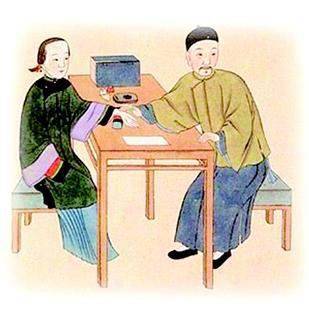
Excess pulse and surging pulse: Both exhibit fullness and strength, but the surging pulse resembles turbulent waves, appearing large and full, with a strong incoming and weak outgoing flow, easily felt when floating; while the excess pulse is large and solid, with strength in both rising and falling, hence the saying “both floating and sinking should be large and long, with no emptiness under the fingers.”
Thin pulse and minute, weak, and moist pulses: All four exhibit a fine and weak pulse shape. However, the thin pulse is small yet clearly felt; the minute pulse is extremely fine and soft, almost imperceptible, sometimes difficult to count, with indistinct rises and falls; the weak pulse is deep, fine, and weak, while the moist pulse is floating, fine, and weak, with the pulse position opposite to the weak pulse, being detectable with light pressure but not with heavy pressure.
Hollow pulse and leather pulse: Both exhibit a hollow appearance, but the hollow pulse is large and weak, resembling a scallion tube, indicating a soft pulse; while the leather pulse is large and beats strongly, with a tense hollow feel, resembling a drum skin, indicating a harder pulse.
String-like pulse and long, tight pulses: The string-like pulse resembles the long pulse, but the long pulse exceeds the original position, like following a long pole, long but not urgent; the string-like pulse, while long, has a tense pulse feel, as if pressing on a guitar string. The “Medical Treatise” states: “The long pulse resembles the string but is more abundant than the string; the string pulse is urgent, while the long pulse is relaxed.” The string pulse is similar to the tight pulse; both have tense pulse feels, but the string pulse feels like pressing on a guitar string without urgency, while the tight pulse feels like pressing on a taut rope, with a tense pulse feel, and the tight pulse is larger than the string pulse.
Short pulse and moving pulse: Both exhibit a short and contracted appearance, but the short pulse is short and rough, often slow, not filling three positions; the moving pulse resembles a bean, often slippery, rapid, and strong. The “Medical Techniques” states: “The short pulse resembles the moving pulse but is weaker; the moving pulse is slippery and rapid, while the short pulse is rough and must be slow.”
Knotted, intermittent, and rapid pulses: All belong to arrhythmic pulses with pauses, which is a commonality among the three. However, the knotted and rapid pulses are irregular interruptions with short pauses, while the intermittent pulse has regular pauses, with longer pause durations, distinguishing it from the knotted and rapid pulses. Although both knotted and rapid pulses have irregular interruptions, the knotted pulse is slow with pauses, while the rapid pulse is rapid with pauses.
2. Contrast Method
Floating pulse and sinking pulse: These are two opposing pulse patterns in terms of depth; the floating pulse is superficial and can be felt with light pressure, indicating an exterior condition (yang); the sinking pulse is deep and cannot be felt with light pressure, requiring heavy pressure to be felt, indicating an interior condition (yin).
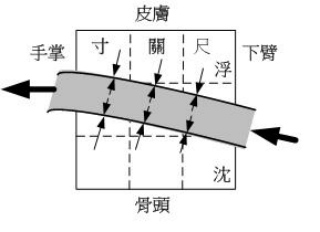
Slow pulse and rapid pulse: These are two opposing pulse patterns in terms of speed; the slow pulse beats slower than the normal pulse, with fewer than four beats per breath; the rapid pulse beats faster than the normal pulse, with more than five beats per breath, indicating cold for the slow pulse and heat for the rapid pulse, also indicating deficiency.
Deficiency pulse and excess pulse: These are two opposing pulse patterns in terms of strength; the deficiency pulse has no strength in all three positions; the excess pulse has strength in all three positions, indicating deficiency and excess.
Slippery pulse and rough pulse: These are two opposing pulse patterns in terms of smoothness; the slippery pulse flows smoothly and feels round; the rough pulse is difficult and stagnant, extremely unyielding, with the ancient saying describing the rough pulse as “like a light knife scraping bamboo,” meaning the pulse is not smooth under the fingers.
Surging pulse and thin pulse: These are two opposing pulse patterns in terms of size and strength; the surging pulse is large, full, and strong, with a strong incoming and weak outgoing flow; the thin pulse is small and thread-like, often weak, but clearly felt.
Long pulse and short pulse: These are two opposing pulse patterns in terms of length; the long pulse exceeds the original position, indicating a pulse range that exceeds the original position, metaphorically likened to following a long pole; the short pulse is short and contracted, indicating a pulse range that is smaller than the original position.
Tight pulse and moderate pulse: These are two opposing pulse patterns in terms of tension; the tight pulse is tense and strong, like pressing on a twisted rope; the moderate pulse is relaxed, with four beats per breath.
Compiled by/Liu Wei Formatted by/Gao Haiyan
